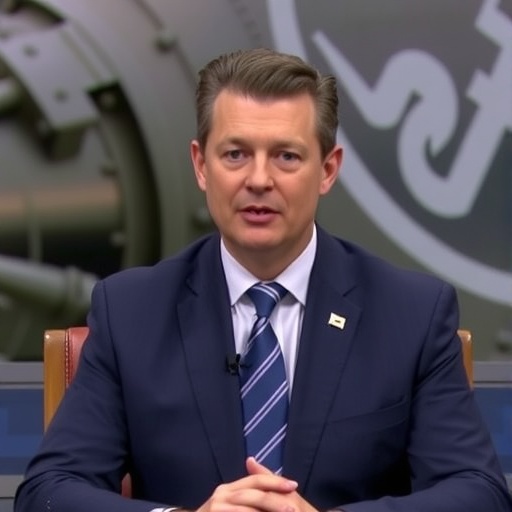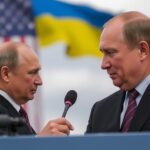In the shadow of exploding missiles over Kyiv, Ukrainian President Volodymyr Zelensky has issued a stark warning: without additional US-supplied Patriot air defense systems, Ukraine’s skies remain perilously vulnerable to relentless Russian attacks. This urgent call comes just hours after a barrage of over 100 drones and missiles targeted the capital, underscoring the escalating threat as the war enters its third year.
- Kyiv’s Night of Terror: Unpacking the Latest Russian Assault
- Zelensky‘s Direct Appeal: Spotlight on Patriot Systems’ Vital Role
- Ukraine’s Bold Bid: Seeking 25 Additional Patriot Batteries
- Patriot’s Battlefield Legacy: Success Stories Amid Russian Onslaughts
- International Allies Respond: Navigating Aid Politics in Washington and Beyond
- Fortifying Ukraine’s Future: The Path to Unbreakable Skies
Kyiv’s Night of Terror: Unpacking the Latest Russian Assault
The night of October 15, 2024, will be etched in the memories of Kyiv’s residents as one of the most intense nights of the ongoing conflict. Russian forces launched a massive coordinated strike, deploying more than 100 Shahed drones and ballistic missiles aimed at Ukraine’s energy infrastructure and civilian areas. According to Ukraine’s Air Force, 92 out of 112 incoming threats were intercepted, but the remaining strikes caused significant damage, including power outages affecting over 200,000 households and injuries to at least 15 people in the capital alone.
Emergency services worked through the dawn to extinguish fires at a key substation on the outskirts of Kyiv, where debris from intercepted missiles rained down like deadly confetti. Eyewitness accounts paint a picture of chaos: ‘The sky lit up like fireworks, but these were no celebrations,’ said Olena Kovalenko, a 42-year-old teacher who sheltered with her family in a metro station. This attack is part of a pattern of Russian aggression, with similar barrages hitting other cities like Kharkiv and Odesa in recent weeks, leaving Ukraine’s power grid on the brink of collapse as winter approaches.
Statistics from the Ukrainian Ministry of Defense reveal a grim escalation: Russian attacks have surged by 40% in the past month, with drones alone accounting for over 500 incursions. These strikes not only target military assets but also aim to demoralize civilians, hitting hospitals, schools, and residential buildings. In Kyiv, the latest assault damaged a maternity ward, prompting international outrage and renewed calls for bolstered air defenses.
Zelensky‘s Direct Appeal: Spotlight on Patriot Systems’ Vital Role
Addressing the nation and the world via a late-night video message, President Zelensky did not mince words. ‘Every Patriot system saves lives. We’ve seen it in action, downing missiles that would otherwise devastate our cities. But we need more—now,’ Zelensky stated, his voice steady amid the audible distant booms of air raid sirens. He highlighted how the existing six Patriot batteries, donated by allies like the US, Germany, and the Netherlands, have intercepted thousands of threats since their deployment in 2023.
The Patriot, formally known as the MIM-104 Patriot surface-to-air missile system, is a cornerstone of Ukraine’s air defense strategy. Developed by Raytheon Technologies in the US, it uses advanced radar to detect and engage targets at ranges up to 160 kilometers. In Ukraine, these systems have proven indispensable, with a reported success rate exceeding 90% against cruise missiles and drones. Zelensky’s emphasis on Patriots comes at a critical juncture, as Ukraine faces a shortage of interceptors and maintenance challenges for its current fleet.
Experts echo the president’s urgency. ‘The Patriot isn’t just hardware; it’s a shield for sovereignty,’ said Mykola Bielieskov, a defense analyst at the National Institute for Strategic Studies in Kyiv. In interviews with international media, Bielieskov noted that without expanded coverage, Russian forces could exploit gaps, potentially overwhelming Ukraine’s layered defenses, which also include Soviet-era S-300s and Western NASAMS systems.
Ukraine’s Bold Bid: Seeking 25 Additional Patriot Batteries
In a formal request submitted to the United States last week, Ukraine has outlined an ambitious plan to acquire 25 more Patriot systems, a move that would represent one of the largest single procurements in the conflict’s history. This isn’t mere wishful thinking; preliminary discussions with US officials indicate potential pathways through existing aid packages or direct sales under the Foreign Military Financing program.
The cost is staggering—each Patriot battery runs about $1 billion, including missiles, radars, and launchers—but Ukrainian officials argue it’s an investment in survival. ‘We’re not asking for charity; we’re proposing a partnership to end this terror faster,’ Zelensky told reporters during a virtual summit with NATO leaders. The request breaks down into phases: immediate delivery of five batteries from US stockpiles, followed by production ramp-ups at Raytheon’s facilities in Arizona and Massachusetts.
Supporting data from the Kiel Institute for the World Economy shows that air defense commitments to Ukraine have totaled over $10 billion since 2022, yet gaps persist. Only 20% of Ukraine’s airspace is currently covered by advanced systems like the Patriot, leaving vast regions exposed. Ukraine’s bid also includes training for operators, with over 1,000 Ukrainian troops already certified on Patriot platforms at US bases in Oklahoma and Germany.
- Key Components of the Request: 25 full batteries, including PAC-3 missiles for anti-ballistic defense.
- Timeline: First units requested by Q1 2025 to counter anticipated Russian winter offensives.
- Funding Sources: Combination of US supplemental aid, European contributions, and possible Ukrainian budget allocations.
Challenges abound, however. Production bottlenecks mean new Patriots could take 18-24 months to deliver, prompting Ukraine to eye refurbished systems from allies like Israel and Taiwan.
Patriot’s Battlefield Legacy: Success Stories Amid Russian Onslaughts
The Patriot’s track record in Ukraine is nothing short of legendary. In May 2023, during a massive Russian drone swarm on Kyiv, Patriots downed 35 of 36 incoming threats, preventing what could have been catastrophic blackouts. More recently, in July 2024, a battery near Dnipro intercepted a Kinzhal hypersonic missile, a feat that US military officials hailed as a ‘game-changer’ in modern warfare.
These successes haven’t gone unnoticed by Russia, which has adapted by deploying decoy drones and low-flying cruise missiles to test Patriot limits. Yet, the system’s integration with Ukraine’s P-18 radars and Western intelligence feeds has created a formidable network. ‘It’s not invincible, but it’s the best we have against Russian attacks,’ admitted a Ukrainian Air Force spokesperson, who requested anonymity due to operational security.
Broader context reveals the Patriots’ global impact. Originally designed during the Cold War, the system has been battle-tested in the Gulf Wars and Saudi Arabia’s defenses against Yemen’s Houthis. In Ukraine, it symbolizes Western resolve, with deployments often accompanied by US personnel for maintenance—though Kyiv insists on full operational independence.
Statistics underscore the stakes: Since the full-scale invasion in February 2022, Russia has launched over 8,000 missiles and 15,000 drones at Ukraine, per UN estimates. Without Patriots, civilian casualties could double, as seen in uncovered regions where simpler defenses like MANPADS struggle against high-altitude threats.
International Allies Respond: Navigating Aid Politics in Washington and Beyond
Zelensky’s plea has reverberated through global capitals, but responses are mixed. The Biden administration, facing domestic political headwinds ahead of the US elections, has pledged $61 billion in aid but stopped short of confirming the 25 Patriots. ‘We’re reviewing all options to strengthen Ukraine’s air defense,’ said Pentagon spokesperson Sabrina Singh in a briefing, emphasizing ongoing deliveries of interceptor missiles worth $2.2 billion.
European nations are stepping up too. Germany, which donated three Patriots last year, announced an additional €500 million package that could include refurbished systems. Poland and Romania, frontline NATO members, have expressed willingness to host training hubs. Yet, hurdles remain: Congressional delays on aid bills and concerns over depleting US stockpiles for potential conflicts with China or Iran.
Quote from NATO Secretary General Jens Stoltenberg: ‘Air defense is non-negotiable for Ukraine’s victory. We must match Russia’s escalation with unified support.’ Meanwhile, humanitarian organizations like the Red Cross report that Russian attacks have displaced 6 million Ukrainians, with air defenses directly linked to safe returns.
In a surprising angle, private sector involvement is emerging. US defense contractors are lobbying for accelerated production, citing economic benefits—each Patriot battery supports 500 jobs in the American heartland.
Fortifying Ukraine’s Future: The Path to Unbreakable Skies
As Ukraine pushes for these 25 Patriots, the implications extend far beyond immediate defense. Enhanced air coverage could enable bolder counteroffensives, protect reconstruction efforts, and deter further Russian escalation. Analysts predict that full deployment might reduce successful strikes by 70%, buying time for diplomatic breakthroughs or a negotiated peace.
Looking ahead, Zelensky’s administration is diversifying: exploring Israeli Iron Dome integrations and domestic drone interceptors. International summits in Brussels next month could seal deals, while US election outcomes will shape aid flows. For now, every intercepted missile is a testament to resilience, but the message is clear—more Patriots mean more lives saved, and a stronger Ukraine standing tall against the storm.










